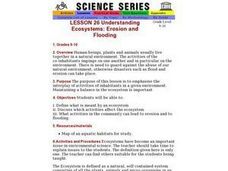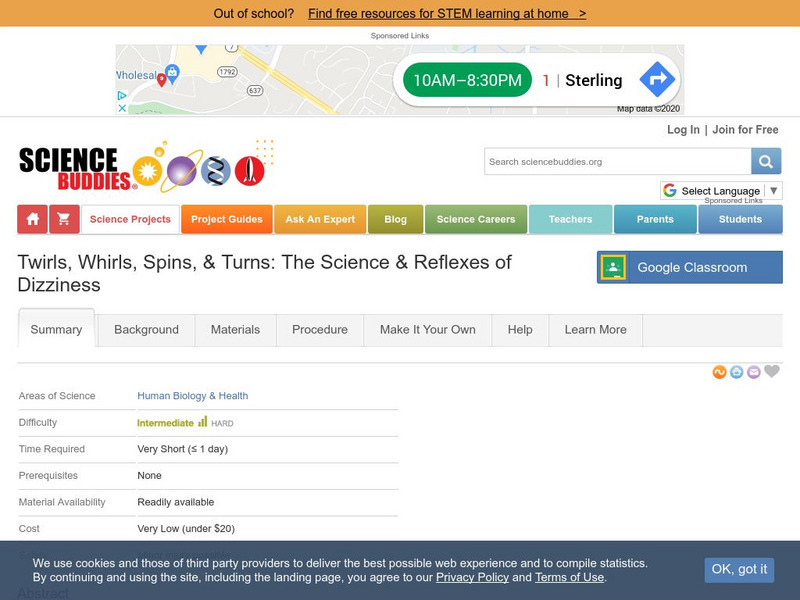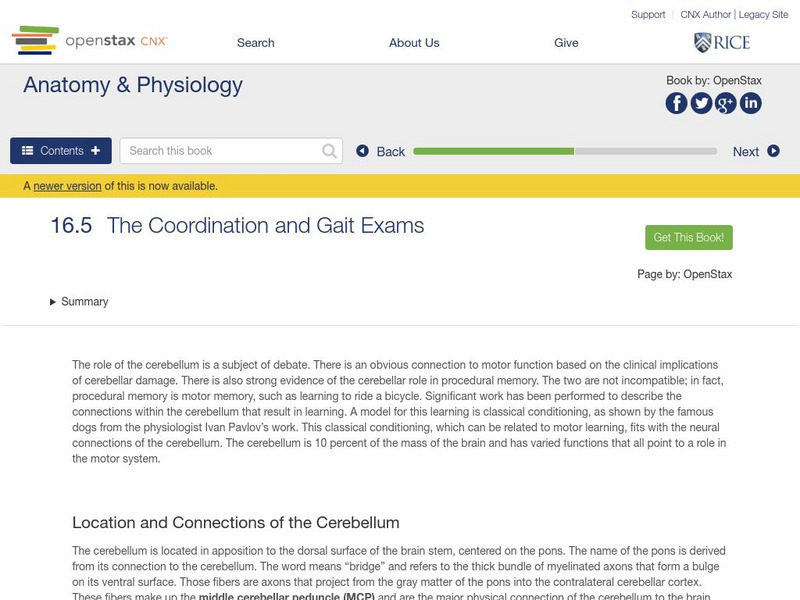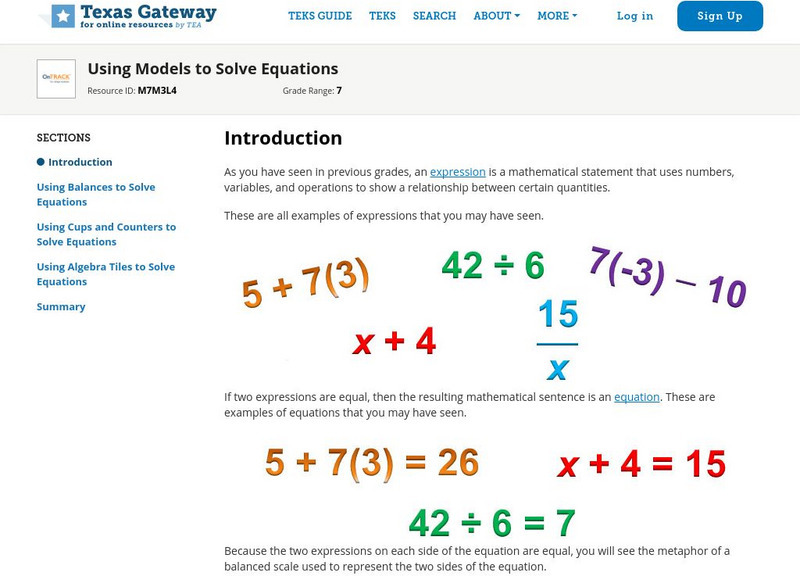Curated OER
Romare Bearden and the Face Collage
Fourth graders create a collage from magazines and newspapers to create a face. After finishing the face, they use mixed media to complete the background. They write their own description and examine the life and works of Romare Beardon.
Curated OER
TE Activity: Build Your Own Mobile
Learners inquire into how the center of mass is the key factor in designing cars. They construct an oddly shaped object and determine its center of mass. They find that engineers are able to predict how objects will behave while they are...
Curated OER
Measurement: Using the balance
Students use a balance and gram cubes to measure several different objects. They then record their results on a data chart and answer questions about them.
Curated OER
Rocking the Boat
Students work together to discover the concepts of stability and equilibrium. They examine how equilibrium is related to an item's center of mass. They create their own action scene in a literacy activity.
Curated OER
Perching Parrot
Pupils explore the concepts of center of mass and static equilibrium by seeing how non-symmetrical objects balance. They also analyze why all forces on an object must cancel out exactly for an object to be stationary.
Curated OER
Understanding Ecosystems: Erosion and Flooding
Students study the balance in the environment needed for ecosystems. They discuss what can lead to erosion and flooding.
Curated OER
Wardrobe
Sixth graders examine the concept of symmetry and balance. They view a wardrobe with an inlaid design, then design and create a symmetrical pattern using two different colors of construction paper.
Curated OER
The Dinosaur Body
Young scholars investigate how body design affects balance. They make simple models of dinosaur bodies using straws and marshmallows. Before making their models, they discuss the effects of gravity and the importance of balance in body...
Curated OER
Bean Bag Fitness Fun
Learners move a bean bag in a variety of activities aimed at increasing flexibility.
Curated OER
Dancing With Props
Students use move a prop by moving their bodies. They are encouraged to focus on balance, a variety of body movements, and making the prop central to their movements.
Curated OER
Mirror/Matching Tag
Learners travel around the provided space avoiding the "taggers" using a teacher chosen locomotor pattern.
Cornell University
Cornell University: Art, Design, and Visual Thinking
Use the left-hand toolbar of this site to investigate an online textbook for the language of design. It provides visual examples and explanations of line, form, color, color psychology, texture, balance, proportion and many more...
Math Cats
Math Cats: Math Cats Balance
Use this interactive activity to learn about weights, balance and basic mathematics. With problem solving and math skills solve the questions about how many objects will balance out on the interactive scales.
Science Buddies
Science Buddies: Balancing Act: Finding Your Center of Gravity
Like to have the balance of a tightrope walker? Try the more close - to - the - ground balancing test in this easy experiment to learn a few trade secrets of the high wire experts. In this project, you'll find your center of gravity and...
Science Buddies
Science Buddies: Twirls, Whirls, Spins, & Turns: Reflexes & Dizziness
Tilt-A-Whirls, Merry-Go-Rounds, Spinning Tea Cups. Just the thought of these rides is enough to make someone dizzy, or queasy. Learn about spins, turns, and the mixed signals that fire in our brains when the sensation of dizziness takes...
CK-12 Foundation
Ck 12: Senses
[Free Registration/Login may be required to access all resource tools.] The following online tutorial explains how sensory stimuli are perceived and interpreted.
OpenStax
Open Stax: Applications of Statics, Including Problem Solving Strategies
From a chapter on Statics and Torque in a Physics textbook. This section of the chapter discusses how statics can be applied in the real world, and strategies for solving statics problems. Includes a question, two exercises, and a...
OpenStax
Open Stax: Anatomy & Physiology: The Coordination and Gait Exams
Students learn about the relationship between the location of the cerebellum and its function in movement in order to understand the processes of coordination and gait exams.
TeachEngineering
Teach Engineering: Riding the Gravity Wave
Students write a biographical sketch of an artist or athlete who lives on the edge, riding the gravity wave, to better understand how these artists and athletes work with gravity and manage risk. Note: The literacy activities for the...
TeachEngineering
Teach Engineering: Sum It Up: An Introduction to Static Equilibrium
Students are introduced to static equilibrium by learning how forces and torques are balanced in a well-designed engineering structure. A tower crane is presented as a simplified two-dimensional case. Using Popsicle sticks and hot glue,...
TeachEngineering
Teach Engineering: Solving With Seesaws
Students use a simple seesaw to visualize solving a two- or three-step mathematics equation, while solving a basic structural engineering weight balance problem in the process. They solve two-step equations on a worksheet and attempt to...
TeachEngineering
Teach Engineering: Build Your Own Mobile
Students creatively construct mobiles to balance oddly shaped objects while learning about the concept of the center of mass.
Texas Education Agency
Texas Gateway: Using Models to Solve Equations
Given a problem, the student will use concrete and pictorial models to solve equations and use symbols to record their actions.
PBS
Pbs Learning Media: Cyber Squad Film Shoot: Day 2
The CyberSquad reviews their budget for the second day of their film shoot in this video from Cyberchase.

























